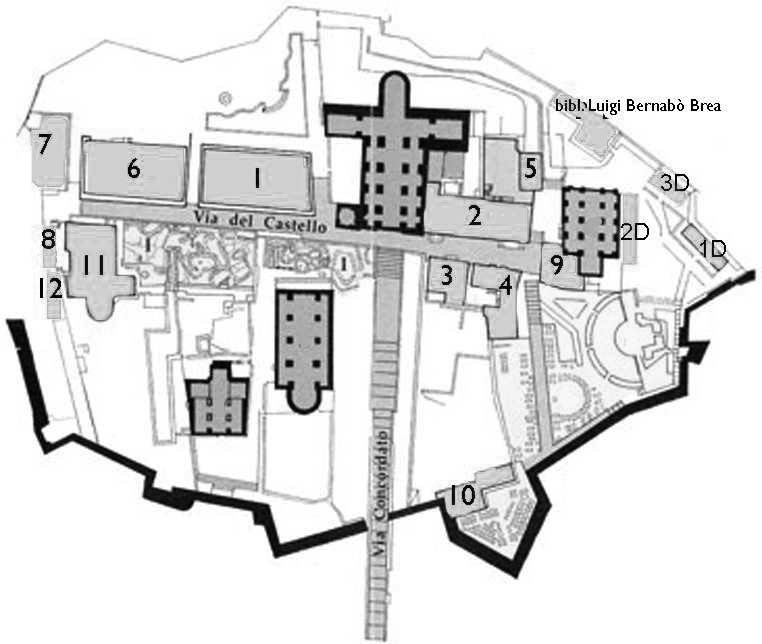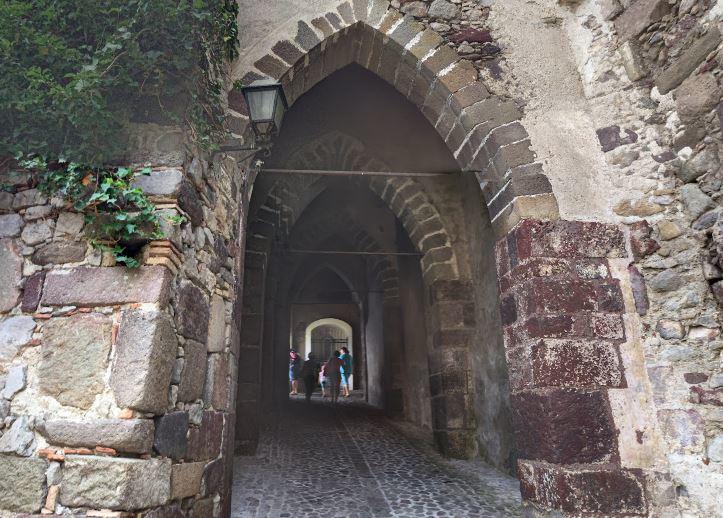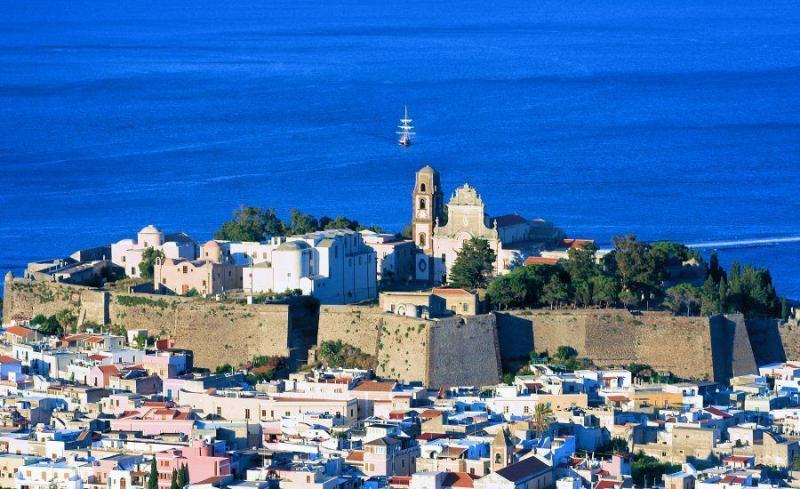The Castle of Lipari

Image: GURS Sicily Region n.51 of 24/11/2017
The Castle of Lipari, located on a rock of volcanic origin that juts into the sea rising to a height of about fifty meters, consists of a real fortified citadel (Civita) which includes the Castle itself and a series of buildings residential, religious, museum areas and an archaeological park. Not much remains of the Castle, except for some remains, the imposing walls and the access structures. The walls, currently visible, are due to the reconstruction carried out at the end of the sixteenth century at the behest of the Spaniards (Charles V) after the destruction in 1544 by the Turkish admiral Barbarossa. The area of the castle has been frequented starting from the Neolithic (4.000 BC) until today, seeing the presence of Greeks, Romans, Byzantines, Arabs, Normans, Swabians, Aragonese and Spaniards and the area constituted the first nucleus of the ancient village of Lipari. The same castle, in the northern part, has incorporated the walls of the old Greek acropolis of the XNUMXth / XNUMXth century BC One of the Norman towers, on the northern part served to control the main access, from this passage you could only enter the upper part narrow elbow tunnel, equipped with defense devices, through slits and machicolations (used to throw hot oil on the attackers) still evident along the entire route. This access door is accessed from Piazza Mazzini.

Photo: Google Street view
Monuments inside the castle walls:
- Church of St. Catherine at the entrance, with a single cross-shaped nave and no longer open to the public (late XNUMXth-early XNUMXth century);
- Archaeological excavations which show the remains of huts dating back to the Bronze Age and part of the Greek-Roman urban plan. (adjacent to the church of Santa Caterina);
- Aeolian regional archaeological museum in some wings of the castle and in the ancient bishop's seat;
- Church of Santa Maria Santissima Addolorata (XVI century);
- Church of Santa Maria Immacolata (XNUMXth century)
- Cathedral of San Bartolomeo (900th century) also reachable from the monumental staircase built in XNUMX (Castle climb)
- Church of Our Lady of Grace (XNUMXth century).
- Cloister of the Benedictine Monastery built with Roman and medieval columns and capitals, decorated with animal figures) and plant motifs
Note: A part of the Civita is bound by law 89/1939.
Note. The area falls within zone A of the Archaeological Park of the Aeolian Islands being established (Decree of 19 October 2017 of the Department of Heritage and Identity which identifies the area of the park that affects four islands of the Archipelago - Lipari, Salina, Panarea and Filicudi - and falling within the territories of the municipalities of Lipari, Santa Marina Salina, Malfa and Leni.

Photo: wikipedia
Bibliography and further in-depth documents:
UNESCO Management Plan of the Aeolian Islands
100) FIRST SICILY - AT THE ORIGINS OF SICILIAN SOCIETY - volume first edited by Sebastiano Tusa Palermo 1997.
235) Meligunìs - Lipàra Vol. I: The prehistoric station of the Diana district and the protohistoric necropolis of Lipari - By Luigi Bernabò Brea and Madeleine Cavalier - Publications of the Aeolian Museum of Lipari - Flaccovio publisher, Palermo 1960
236) Meligunìs - Lipàra Vol. II: The Greek and Roman necropolis in the Diana district - By Luigi Bernabò Brea and Madeleine Cavalier - Publications of the Aeolian Museum of Lipari - Flaccovio publisher. Palermo 1965
237) Meligunìs - Lipàra Vol. III: Prehistoric stations of the Panarea, Salina and Stromboli islands - By Luigi Bernabò Brea and Madeleine Cavalier - Publications of the Aeolian Museum of Lipari - Flaccovio publisher. Palermo 1968
Ignazio Caloggero: History of Sicily Interpreted Vol. 1: Before the Greeks (2022)
Ignazio Caloggero on the web:
History of Sicily - 1.3.1: Neolithic and the birth of agriculture in Sicily
History of Sicily - 1.3.2: Religiosity and Burials in the Neolithic Period
History of Sicily - 1.3.3: Art in the Neolithic
History of Sicily - 1.3.4: Neolithic Sites List
History of Sicily - 1.4.1: The development of metallurgy
History of Sicily - 1.4.2: Social and cultural development
History of Sicily - 1.4.3: Burials during the Metal Age
History of Sicily - 1.4.4: Religious sentiments during the metal age
Card insertion: Ignazio Caloggero
Photo: WEB
Information contributions: Web, Region of Sicily
Note: The populating of the files of the Heritage database proceeds in incremental phases: cataloging, georeferencing, insertion of information and images. The cultural property in question has been cataloged, georeferenced and the first information entered. In order to enrich the information content, further contributions are welcome, if you wish you can contribute through our area "Your Contributions"



